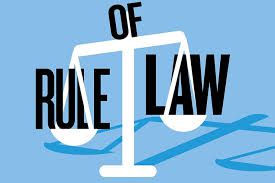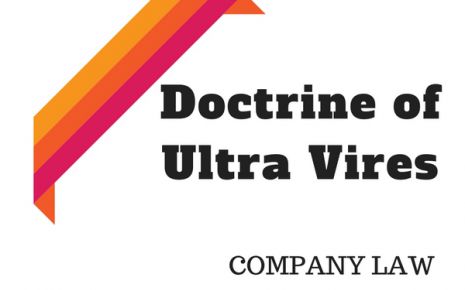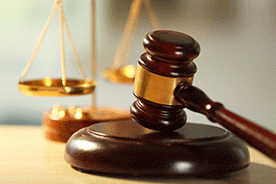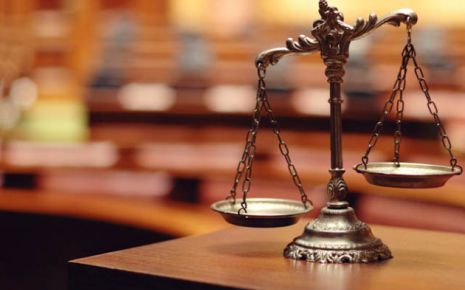Right To Protest or Right to Obstruct: An analysis of the Shaheen Bagh Judgment
The Supreme Court of India, in a landmark judgment, recently held in the case
of Amit Sahni vs. Commissioner of Police (Civil Appeal 3282/2020) that
public ways and roads are not the places where protests should be carried out as
they cause hardships to the general public.
The 3-Judge bench held that right to protest, which is a fundamental right, should not be utilized in a manner which would render the rights of other people subservient to the rights of the protestors.The bench specified that such legitimate and peaceful protest must be carried out in the areas which have been designated for the purpose.
Another fact which was noted by the bench was that the manner in which protests were carried out against an oppressive colonial government was not something which could comfortably fit into a democratic setup.
The Court refused to accept the contention of the protesting people that since right to protest is a fundamental right, any number of people can assemble in any kind of public place, be it a road or another public place, and indefinitely occupy it in the name of protest.
Another noteworthy judgment is the one passed in the case of Anita Thakur & Ors. Vs. State of J & K &Ors.1 . The SC categorically laid down in this case that a significant feature of a democracy is the space offered for legitimate dissent. However, the SC clarified that the right to peaceful protest, like any other fundamental right, is not absolute in nature and can be restricted on the ground of violation of the sovereignty and integrity of India and public order as well as public safety.
The judgment, which was authored by Justice AK Sikri, stated that:
One of the cherished aspects of the political life in India is a tradition to express grievances through direct action or peaceful protest. Organized, non-violent protest were a key weapon in the struggle for independence, and the right to protest is now recognized as a fundamental right in the Constitution.
A pertinent question which may come to the mind of a person discussing or reading about right to process is that what kind of protests we can consider as peaceful ones. Can assembling at a place in large numbers without arms and protesting with nothing else apart from slogans itself render the protest peaceful?
The answer would be an outright No. Rights of lakhs of people cannot be subject to the whims and fancies of a few thousands who seek to occupy public places in large numbers for an indefinite period of time. No recognized right of people, even if considered in the widest amplitude possible, can be permitted to be unbridled, unrestricted and absolute. Any recognized right is and must be subjected to legitimate restrictions to secure the balance of a democratic setup. Rights cannot be considered in a stand-alone manner and used as a cover to shrug off the responsibilities which come along with them.
The SC also referred to an earlier judgment delivered in the case of Himat Lal K. Shah vs. Commissioner of Police 2, in which a five-judge Constitution bench consisting of Justices SM Sikri, AN Ray, PJ Reddy, KK Mathew and MH Beg struck down the rules framed by the Commissioner of Police for the city of Ahmedabad on basis of Section 33 (1) (o) of the Bombay Police Act of 1951.
The Constitution Bench held that while State could impose only reasonable restrictions, the appropriate authority could impose certain restrictions on the right to protest in public roads in the interest of the general public and more so for the maintenance of public order. The rules framed by the Commissioner of Police for city of Ahmedabad in this case were sans specific provisions regarding denial of permission to carry out the protest and hence, were held to be outside the constitutionally permissible limits.
Another case referred to by the Bench is Mazdoor Kisan Sanghatan vs. Union of India3. In this case, the SC directed the police authority to frame rules and proper and appropriate guidelines. for limited use of Jantar Mantar area for protests and laid down a few factors to be considered while considering whether or not to permit protests, such as the likely obstruction to traffic, any likely offences against public tranquillity and damage to public safety etc.
�
In this context, it would be relevant to refer principles laid down by a judgment of the Madras High Court in the case of Govt. of Tamil Nadu & Ors. Vs. P. Ayyakannu 4, in which a Division Bench of Justice KK Sashidharan and Justice R. Subramanian denied permission to carry out protest at Marina Beach.
In the Writ Appeal filed by the TN Government against the permission granted to Mr.Ayyakannu to carry out peaceful hunger strike at Marina Beach, the DB held as follows:
The protestors who claim to espouse the cause of the public, often forget that their right to protest ends when other person's right to free movement and 'right to not to listen to starts.
A citizen has no fundamental right to insist that his speech should be heard by an unwilling citizen. Similarly, it is not possible to compel a person to witness a procession, against his wishes.
From the above mentioned rulings and principles, it is evident that the right to protest, even if it is non-violent and peaceful must be legitimately restricted, so as to protect the legitimate interests of persons who do not participate in the protest. We do have right to protest and express our dissent in a democracy, but the same does not grant us the Right to Obstruct with respect to the liberties of others.
To conclude, I would like to mention a quote by legal philosopher Zechariah Chafee Jr., which was published as part of an article in the Harvard Law Review in 1919. Your right to swing your arms ends just where the other man's nose begins.5
End-Notes:
The 3-Judge bench held that right to protest, which is a fundamental right, should not be utilized in a manner which would render the rights of other people subservient to the rights of the protestors.The bench specified that such legitimate and peaceful protest must be carried out in the areas which have been designated for the purpose.
Another fact which was noted by the bench was that the manner in which protests were carried out against an oppressive colonial government was not something which could comfortably fit into a democratic setup.
The Court refused to accept the contention of the protesting people that since right to protest is a fundamental right, any number of people can assemble in any kind of public place, be it a road or another public place, and indefinitely occupy it in the name of protest.
Another noteworthy judgment is the one passed in the case of Anita Thakur & Ors. Vs. State of J & K &Ors.1 . The SC categorically laid down in this case that a significant feature of a democracy is the space offered for legitimate dissent. However, the SC clarified that the right to peaceful protest, like any other fundamental right, is not absolute in nature and can be restricted on the ground of violation of the sovereignty and integrity of India and public order as well as public safety.
The judgment, which was authored by Justice AK Sikri, stated that:
One of the cherished aspects of the political life in India is a tradition to express grievances through direct action or peaceful protest. Organized, non-violent protest were a key weapon in the struggle for independence, and the right to protest is now recognized as a fundamental right in the Constitution.
A pertinent question which may come to the mind of a person discussing or reading about right to process is that what kind of protests we can consider as peaceful ones. Can assembling at a place in large numbers without arms and protesting with nothing else apart from slogans itself render the protest peaceful?
The answer would be an outright No. Rights of lakhs of people cannot be subject to the whims and fancies of a few thousands who seek to occupy public places in large numbers for an indefinite period of time. No recognized right of people, even if considered in the widest amplitude possible, can be permitted to be unbridled, unrestricted and absolute. Any recognized right is and must be subjected to legitimate restrictions to secure the balance of a democratic setup. Rights cannot be considered in a stand-alone manner and used as a cover to shrug off the responsibilities which come along with them.
The SC also referred to an earlier judgment delivered in the case of Himat Lal K. Shah vs. Commissioner of Police 2, in which a five-judge Constitution bench consisting of Justices SM Sikri, AN Ray, PJ Reddy, KK Mathew and MH Beg struck down the rules framed by the Commissioner of Police for the city of Ahmedabad on basis of Section 33 (1) (o) of the Bombay Police Act of 1951.
The Constitution Bench held that while State could impose only reasonable restrictions, the appropriate authority could impose certain restrictions on the right to protest in public roads in the interest of the general public and more so for the maintenance of public order. The rules framed by the Commissioner of Police for city of Ahmedabad in this case were sans specific provisions regarding denial of permission to carry out the protest and hence, were held to be outside the constitutionally permissible limits.
Another case referred to by the Bench is Mazdoor Kisan Sanghatan vs. Union of India3. In this case, the SC directed the police authority to frame rules and proper and appropriate guidelines. for limited use of Jantar Mantar area for protests and laid down a few factors to be considered while considering whether or not to permit protests, such as the likely obstruction to traffic, any likely offences against public tranquillity and damage to public safety etc.
�
In this context, it would be relevant to refer principles laid down by a judgment of the Madras High Court in the case of Govt. of Tamil Nadu & Ors. Vs. P. Ayyakannu 4, in which a Division Bench of Justice KK Sashidharan and Justice R. Subramanian denied permission to carry out protest at Marina Beach.
In the Writ Appeal filed by the TN Government against the permission granted to Mr.Ayyakannu to carry out peaceful hunger strike at Marina Beach, the DB held as follows:
The protestors who claim to espouse the cause of the public, often forget that their right to protest ends when other person's right to free movement and 'right to not to listen to starts.
A citizen has no fundamental right to insist that his speech should be heard by an unwilling citizen. Similarly, it is not possible to compel a person to witness a procession, against his wishes.
From the above mentioned rulings and principles, it is evident that the right to protest, even if it is non-violent and peaceful must be legitimately restricted, so as to protect the legitimate interests of persons who do not participate in the protest. We do have right to protest and express our dissent in a democracy, but the same does not grant us the Right to Obstruct with respect to the liberties of others.
To conclude, I would like to mention a quote by legal philosopher Zechariah Chafee Jr., which was published as part of an article in the Harvard Law Review in 1919. Your right to swing your arms ends just where the other man's nose begins.5
End-Notes:
- Writ Petition (Criminal) 118 0f 2007, decided on 11TH August 2016
- AIR 1973 SC 87
- Writ Petition (Civil) 1153 of 2017, decided on 23rd July 2018
- Writ Appeal 1042 of 2018, decided on 3rd September 2018
- https://quoteinvestigator.com/2011/10/15/liberty-fist-nose/
Award Winning Article Is Written By: Mr.Pragadeesh Vishwanathan Iyer
Authentication No: OT31667645840-28-1020
Law Article in India
Legal Question & Answers
Lawyers in India - Search By City
LawArticles
How To File For Mutual Divorce In Delhi

How To File For Mutual Divorce In Delhi Mutual Consent Divorce is the Simplest Way to Obtain a D...
Increased Age For Girls Marriage

It is hoped that the Prohibition of Child Marriage (Amendment) Bill, 2021, which intends to inc...
Facade of Social Media

One may very easily get absorbed in the lives of others as one scrolls through a Facebook news ...
Section 482 CrPc - Quashing Of FIR: Guid...

The Inherent power under Section 482 in The Code Of Criminal Procedure, 1973 (37th Chapter of t...
The Uniform Civil Code (UCC) in India: A...

The Uniform Civil Code (UCC) is a concept that proposes the unification of personal laws across...
Role Of Artificial Intelligence In Legal...

Artificial intelligence (AI) is revolutionizing various sectors of the economy, and the legal i...








Please Drop Your Comments